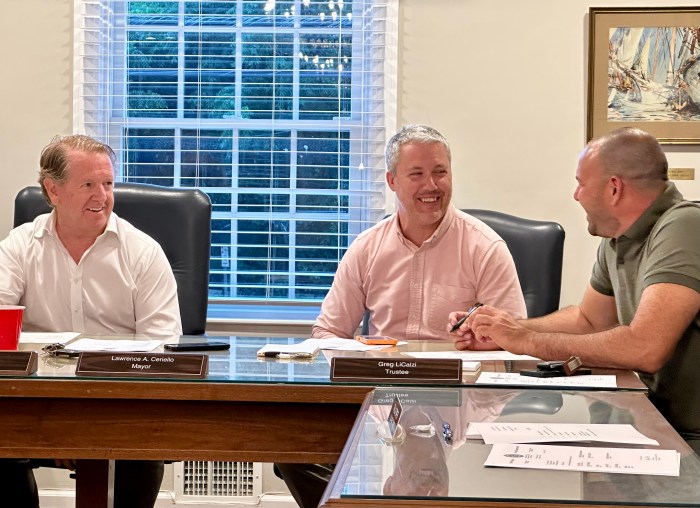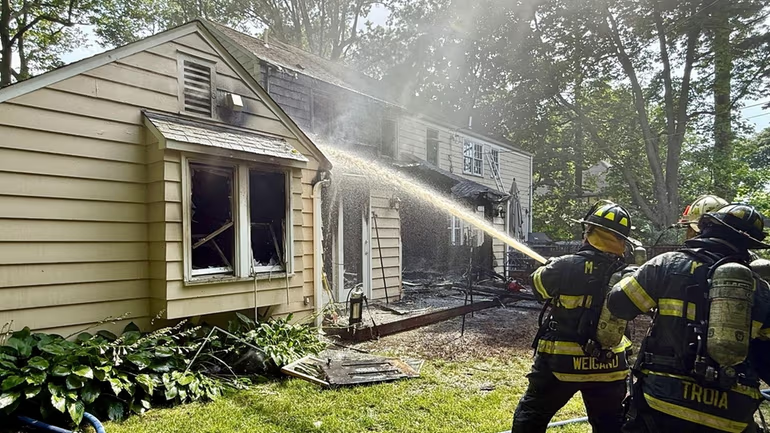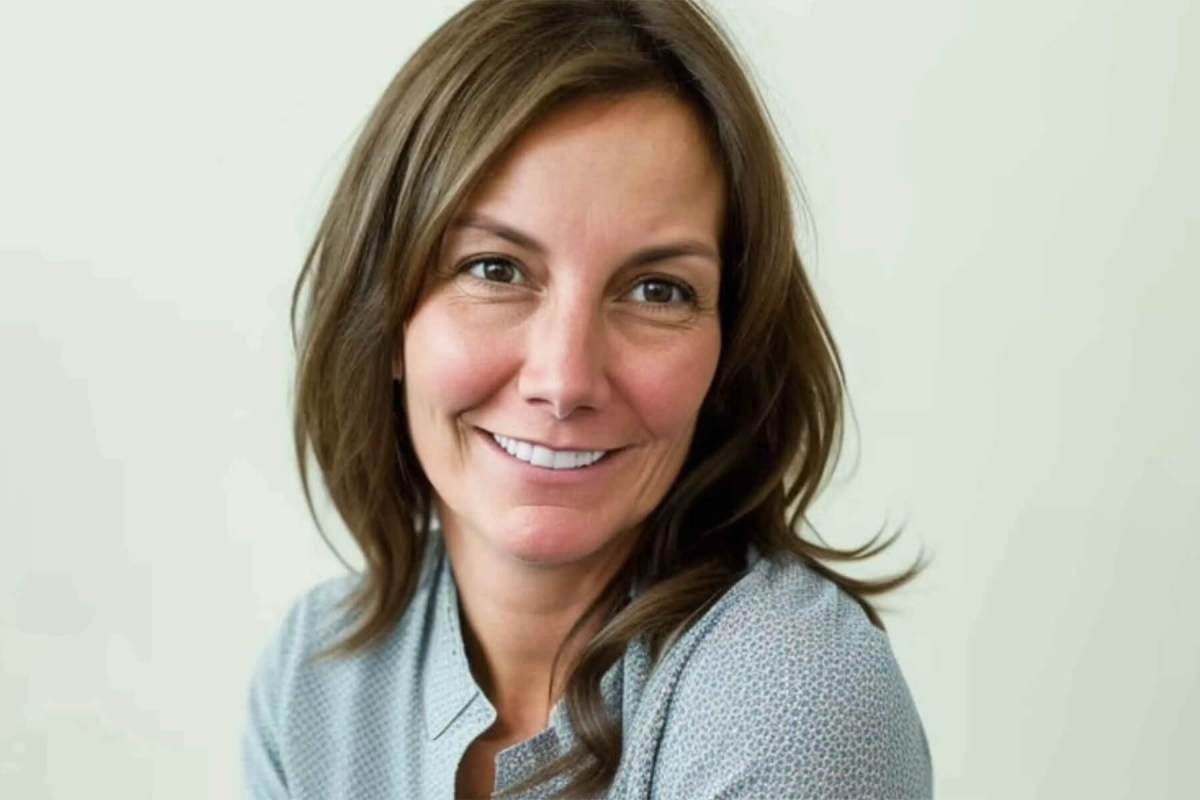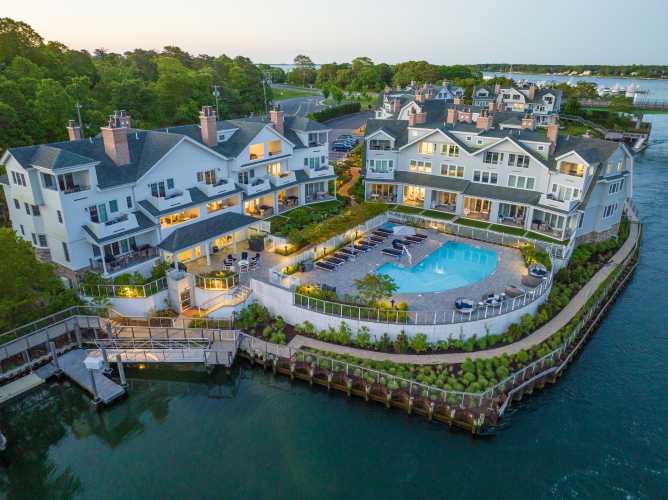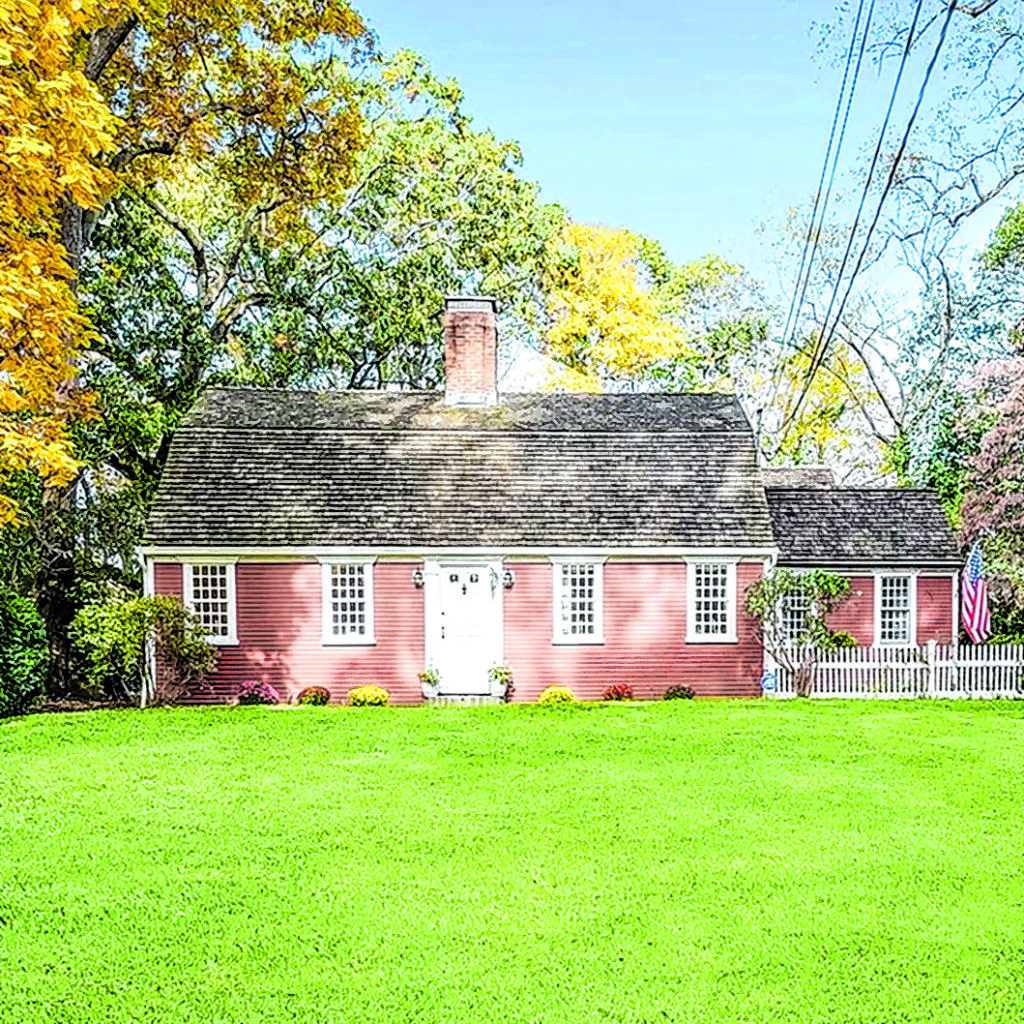
The ‘Lot Of Division’ sparks controversy as residents go to the polls
Residents of the hamlet will go to the polls on Wednesday, April 6 to determine the fate of a $600,000 bond referendum that will finance a new village hall. Voting hours are noon to 9 p.m. at Village Hall, 55 Manhasset Ave., Manhasset. The village has created a webpage with information about the proposed plan to buy and move the Richardson House, at 149 Circle Dr., to an empty lot its owns on the road about 1,000 feet away and turn it into a new village hall. Opponents of the move have questioned the village’s financials on the plan and accused the board of being less than transparent. In response to a letter sent by the village to residents urging passage of the referendum, the group has put up rebuttals at a website it created to argue the case against a new village hall.
It comes down to this: Circle Drive residents do not want a new Plandome Manor Village Hall to be placed on a village-owned empty lot on their block. The closer they live to the approximately 103×145-foot parcel, the more adamant their opposition. Considerable ire was directed at village leaders at meetings to discuss the plan.
In the latest development, more than 20 Circle Drive homeowners hired attorney Linda Agnew to represent their interests. At a meeting with the lawyer on April 5, they discussed the possibility of initiating an Article 78 proceeding to block the village’s plans.
The saga began when developer William Lindenmeier bought the property at 149 Circle Drive. His intention is to knock down the structure, known as the Richardson House, to erect a new house.
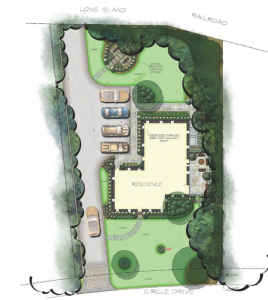
Building Inspector Ed Butt said the new plans were moving through the various boards for permits and approvals. Once Lindenmeier had all his papers in order, the whole issue would become moot. The village has no way of preventing such a move, officials conceded. On April 6, Lindenmeier told the Manhasset Press that he was waiting to see what happened with the vote before applying for a demolition permit.
Though it is not landmarked, its oldest section reportedly dates back to 1730. According to an article in the July 29, 1923 Brooklyn Daily Eagle, Plandome resident George Richardson had it disassembled and moved from Hanover Four Corners, Massachusetts, via barge and reassembled at its current site.
Historian and preservationist Mallory Rutigliano attended the Nov. 16 board meeting and suggested that the village come up with ideas to save the house.
According to the minutes of that meeting, “The home has been meticulously cared for and is in pristine condition. Unfortunately, the previous owners were unable to find buyers who would live in the current home and the property was sold to a developer. The home is slated for demolition. Ms. Rutigliano implored the village and the board to do anything they can to preserve this home and important piece of Plandome Manor history before it is lost forever.”

Then-Village Clerk Randi Malman, after the meeting, asked Mayor Barbara Donno if she could look into the possibility of saving the house.
“I said, ‘Go for it,’ ” Donno related at the Feb. 16 meeting, “She formed the committee. She knew people in the area that belong to a preservation society. So she called different people and they formed the committee. Did I know that they were doing this? Yes. Did I know what they were doing? No.”
Donno pushed back against the charge, circulated by residents, that the village was being secretive about the process and was forcing it through against the wishes of Circle Drive residents.
“The committee members went out and looked at that house and said it would be perfect on a lot 1,000 feet away and it could be a village hall,” Donno said. “And that’s how it happened and that’s when they started working on it.”
The committee, at the January 18 board meeting held over Zoom, gave a presentation about moving the historic house to a 14,935-square-foot empty parcel owned by the village at what will be 41 Circle Drive if plans go through.
“That was the first time I saw that presentation,” Donno asserted. “It’s the first time that the trustees and [trustee] Pat [O’Neill] as an architect knew what was going on. But it was not something that we were involved with. We’re still doing fact-finding. We don’t know if this is going to work. So what we’re trying to do is get all the information and we’re trying to answer your questions and we’re trying to listen to your concerns.”
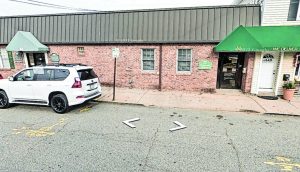
As Donno reminded the crowd, the village was only one of two in the state (Plandome Heights is the other) that did not have its village hall within its boundaries, and needed a waiver from the state. Its government center was located in a storefront at 55 Manhasset Ave. in Manhasset. The staff was squeezed into small rooms, and space for village files was running out. In addition, future rental costs—currently $55,000, including taxes—were sure to rise.
Donno noted that she’s had real estate agents looking in the Manhasset area for an alternative space. But the need for a boardroom (that doubled as a justice court) made it difficult and the mayor noted that “the [rental] costs are extraordinary.”
The village produced documents indicating that the disputed lot was bought in the 1940s for the purpose of putting the seat of government there. This never came to fruition.
Leaders brought the plans into focus at the February and March board of trustees meetings, each of which drew an unusually large and vocal group of residents.
Costs of moving the house and erecting it at the new lot, along with landscaping and site preparation, were estimated at about $648,000. The village voted 4-0 on March 16, with trustee Tony DeSousa absent, to put to a public vote a 10-year, $600,000 bond to finance the move.
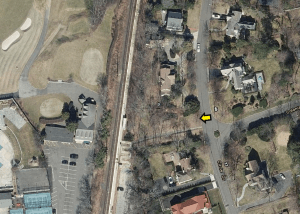
According to Trustee/Deputy Mayor Matt Clinton, who gave the presentation, the village would save close to $700,000 in the years 2033-43 following the repayment of the principal and interest on the bond. In addition, Clinton noted that the village had secured about $2 million in state grants in the past decade and state representatives had promised to work on further funding. These could compensate for unexpected costs, as would the village’s fund reserves of more than $1 million.
“It should be a long-term positive impact and beneficial to the financial well-being of this village,” Clinton said. “And there will be no tax implications for residents.”
Donno assured the residents, “We’re not going to do anything that’s going to raise taxes. We all live here, and I don’t want to do anything to hurt this village or the residents. We have concerns also. At this point, we’re listening to you. Believe me, I have enough to do and this [issue] landing in my lap is not something that I had asked for. It’s just something that took off. It wasn’t something that we conjured up, sat here and discussed, ‘Let’s take this house.’ It was something that just happened.”
Visitors and Values
At the meetings, there were plenty of questions and criticism from residents, nearly all of whom lived on Circle Drive or on adjacent Colonial Drive.
Patricia Brosokas bluntly stated that she and her husband were against the project.
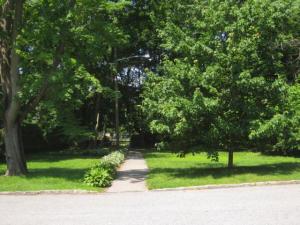
“There were many reasons given to preserve the house, nearly two hours devoted to this,” she said of the Jan. 18 presentation. “There was no real discussion devoted to why. Why we Plandome Manor taxpayers need to do this. Why we have so many questions that were not answered [at that meeting]. Why is this house now the responsibility of Plandome Manor when the previous owners sold it knowing that it was going to be demolished?”
Brosokas took issue with the presentation’s assertion that the placement of the house on the lot “meets all zoning requirements and does not require a variance.”
“[It’s] less than the required 15,000-square-feet-rule the taxpayers would be required to follow if they wanted to build a home in Plandome Manor,” she said. “This house would look massive on that piece of land and it will change the aesthetic of our beautiful block.”
Brosokas also questioned the projected costs of the project, quizzing, “Why did the BOT agree to spend $62,000 on an architectural firm knowing that the majority of people on the [Zoom] call were vehemently against this? Did this go out to bid? Who suggested this firm? Why did the BOT think that this was a good idea? The plot of land in danger of development brings joy to our community. Please don’t take it away and destroy our quality of life.”
Residents noted that the land in question has been used a play area by kids for generations and provides a welcome respite as the only empty parcel in the village.
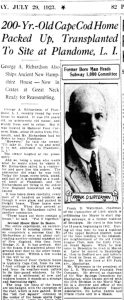
In arguing for placing the village hall there, board members pointed out that the lot is easily accessible to the adjacent Plandome Manor parking lot, enabling parking for the various board meetings. The proposed village hall will have a driveway leading to a back parking area for four to five vehicles.
A speaker questioned the need for a parking lot and driveway/curb at all (currently, the property has no curb), wondering why staff and visitors could not use the public lot nearby. But Butt pointed out that as a public building, it had to provide handicapped parking and Trustee Patricia O’Neill added that on-site parking would make it convenient for the seniors and those with small kids.
Among the major objections from neighbors were that their quiet and safe block would be subjected to an influx of people using village hall. Kate Dunn stated that it was a not a through street, roughly forming a wide upside down “U.”
A real estate agent, she had sold numerous homes in the neighborhood and said this was selling point, along with the lot in question that neighbors and children used a park and play area.
Donno said that at residents’ request the village kept a log of visitors. Between January 24 and March 7, 49 visited village hall—including 22 from Circle Drive—about 1½ per day.
Engineer Robert Eschbacher did a traffic study pro bono in February, using a vehicle counter near the proposed village hall, and concluded, “Traffic will not noticeably change—it will not be an issue.”
Donno also pointed out that Clerk Lisa Mancuso is the only full-time staffer that uses the current (and future) village hall. while Butt and Treasurer Marie DePalo are there only certain days per week.
Agnew, the attorney hired by the residents, spoke soon after the traffic expert at the March 16 meeting and argued that the study was done during an unusually busy time on the street when two houses were under construction. It was flawed, she charged, and urged that a new one be undertaken.
The attorney also joined the residents who questioned what they claimed was a rushed process and hoped that the village would give more consideration to various aspects covered by the State Environmental Quality Review Act. That evening, the trustees voted to declare that the proposed action would not have an adverse impact.
Attendees also argued that the village was underestimating the costs of maintaining an old house, and the attorney, who had secured a copy of the inspection report, and mentioned several deficiencies noted in it.
Donno reaffirmed that real estate professionals she consulted had told her that a village hall in the proposed location would enhance home values.
She added, “I spoke to a real estate appraiser who said, ‘I know the house and that would be a charming village hall in that area and add value to Circle Drive.’ It is the oldest home on the North Shore. To me, that’s lovely.”
Dunn and Anna Pace, both of whom live on the block, objected. Dunn said she has lived in the neighborhood for 60 years and had told the Manhasset Press before the meeting, “I could tell you what this is going to do to property values in the neighborhood and it’s not going to be pretty. This lot was never intended to have a house or anything else on it.”
Pace’s property adjoins the village lot, and she related that she learned from the county’s Department of Assessment that a future village hall would devalue her house. This in turn would also negatively impact her neighbors’ homes.
Pace also continued to be worried about the water issues in the area, saying that though she and a neighbor followed the suggested regulations and had spent considerable sums, their basements still flooded.
Butt said a soil report had found sand down to 27 feet on the village lot. Pace questioned this, saying her her soil is mostly clay and she gets “a lake” in her backyard after heavy rains.
A village hall would make things worse, Pace argued, with the water having no place to go but on her adjoining property. She even asked for a guarantee in writing from the village that her basement would not flood.
Butt reassured her that he was working with the Village of Plandome and the LIRR to try to fix the sources of flooding on their side of the border, and added that the drainage for the proposed village hall would direct and disperse the water well below her basement level.
“Water has a mind of its own,” Pace reminded Butt, saying there are no guarantees.
Attendees were not assuaged by the mayor’s assertion that they had a chance to vote on the bond and reject it, putting an end to the plan. They argued that voters outside the Circle Drive area would be in favor, since it would not be placed in their neighborhood.
“Nobody wants to live next to village hall,” Dunn stated.
It was a sentiment that was repeated in various ways at the meetings at which the proposal was discussed.




